Weekly Current Affairs (15th to 21st March 2025) | General Test Preparation for CUET UG - CUET Commerce PDF Download
Astra Missile Test Launch

Why in News?
- On March 15, 2025, the Aeronautical Development Agency (ADA) achieved a significant milestone by successfully conducting a test launch of the Astra missile from the Light Combat Aircraft (LCA) AF MK1 prototype. This event took place off the coast of Chandipur, Odisha, and signifies advancements in India's indigenous defence capabilities.
Key Takeaways
- The Astra missile is a Beyond Visual Range Air-to-Air Missile (BVRAAM) developed by the Defence Research and Development Organisation (DRDO).
- It is capable of engaging targets at distances exceeding 100 kilometres with high precision.
- The missile has been integrated into the Indian Air Force (IAF) and is currently being adapted for use with the indigenous LCA Tejas and the Indian Navy's MiG-29.
Additional Details
- Astra Missile: The Astra missile is designed to hit targets beyond visual range, which enhances combat effectiveness by allowing aircraft to engage threats from a safe distance.
- The recent test launch confirmed a direct hit on a flying target, demonstrating the missile's advanced capabilities and confirming that all subsystems met mission parameters.
- The development of the Astra missile involved collaboration among various organizations, including ADA, DRDO, and Hindustan Aeronautics Limited (HAL).
- Beyond Visual Range (BVR) missiles are critical in modern air combat, providing a tactical edge by allowing engagement from distances over 20 nautical miles (37 kilometers).
- Future trials are scheduled to further evaluate the Astra missile's performance, reinforcing India's efforts to enhance its indigenous defence systems.
The successful test launch of the Astra missile marks an important step towards strengthening India's defence capabilities, and it has drawn praise from Defence Minister Rajnath Singh and DRDO Chairman Dr. Samir V. Kamat for the collaborative efforts involved in the project.
2nd Phase of PM Internship Scheme
 Why in News?
Why in News?
- On March 15, 2025, Finance Minister Nirmala Sitharaman announced the launch of a dedicated application for the Prime Minister's Internship Scheme (PMIS). This initiative is designed to enhance participation by simplifying the registration process for the scheme's second phase. The application addresses the challenge of limited access to computers by leveraging mobile technology, thus providing a more user-friendly experience for applicants.
Key Takeaways
- The PMIS aims to improve employment opportunities for youth.
- Internships will be provided to a target of 10 million individuals over five years.
- Interns are eligible for a monthly stipend of ₹5,000 and a one-time grant of ₹6,000 for incidental expenses.
Additional Details
- Facilitation Centre in Kolkata: A new facilitation centre has been set up in Kolkata through a collaboration between the Ministry of Corporate Affairs (MCA) and the Confederation of Indian Industry (CII). This centre will aid in mobilizing candidates and providing necessary guidance. CII operates 47 model career centres that will incorporate PMIS cells to enhance outreach and support for applicants.
- Information, Education, and Communication Events: To raise awareness, the MCA is set to conduct over 70 nationwide events focused on Information, Education, and Communication (IEC). These events are aimed at ensuring potential interns are well-informed about the opportunities available through the PMIS.
- Targets: The first round of PMIS successfully engaged 28,141 candidates who accepted internship offers. The second round seeks to provide more than 100,000 internships across over 300 companies, with an ambitious target of achieving 1.25 lakh internships for the financial year 2025.
- Eligibility Criteria: Candidates aged between 21 and 24 years, who have completed their 10th and 12th grades or hold a UG degree, ITI, or other technical qualifications are eligible to apply. This criterion aims to attract a diverse range of young individuals to participate in the scheme.
The PM Internship Scheme represents a significant step towards enhancing employment opportunities for young people across India, providing them with essential professional experiences and training.
Melioidosis in Odisha
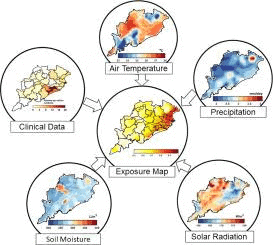 Why in News?
Why in News?
- Recent studies have shed light on the increasing concern of melioidosis in Odisha, India. Research indicates that South Asia accounts for a significant portion of global melioidosis cases. A collaboration between microbiologists and climate scientists aims to understand the environmental conditions that facilitate the transmission of this disease.
Key Takeaways
- Melioidosis is caused by the bacterium Burkholderia pseudomallei.
- The disease can be contracted through contact with contaminated soil or water.
- Melioidosis manifests in various forms, including skin infections and severe pneumonia.
- Fatality rates can reach up to 50% in severe cases, highlighting the importance of early diagnosis.
Additional Details
- Environmental Influences: The incidence of melioidosis is significantly affected by environmental conditions, such as rainfall and temperature, which influence the bacteria's survival.
- The disease tends to peak during and after the monsoon season, indicating a link between climatic events and infection rates.
- Research Collaboration: A joint study by AIIMS Bhubaneswar and IIT Bhubaneswar analyzed meteorological data over nine years in relation to reported melioidosis cases to identify environmental conditions that facilitate the disease's spread.
- A detailed map highlighting high-risk districts in Odisha has been created, with areas such as Cuttack, Balasore, Khordha, and Jajpur showing a higher potential for disease occurrence.
- Climate Change and Public Health: Climate change poses a significant threat by altering rainfall patterns and increasing extreme weather events, which could lead to a broader spread of melioidosis and related diseases.
- Public health systems need to adapt by integrating climate analytics into disease surveillance.
- Broader Implications for Disease Modelling: The findings from the research in Odisha can serve as a model for other regions, emphasizing the necessity of incorporating environmental data into public health planning to enhance outbreak predictions and preparedness for climate-driven diseases.
- Future Research Directions: Additional research is essential to explore other factors influencing melioidosis dynamics, such as land use changes and soil composition.
In conclusion, the rise of melioidosis in Odisha underscores the urgent need for an integrated approach that combines environmental data with public health strategies to combat this infectious disease effectively.
14th ADMM-Plus Experts Working Group on Counter-Terrorism
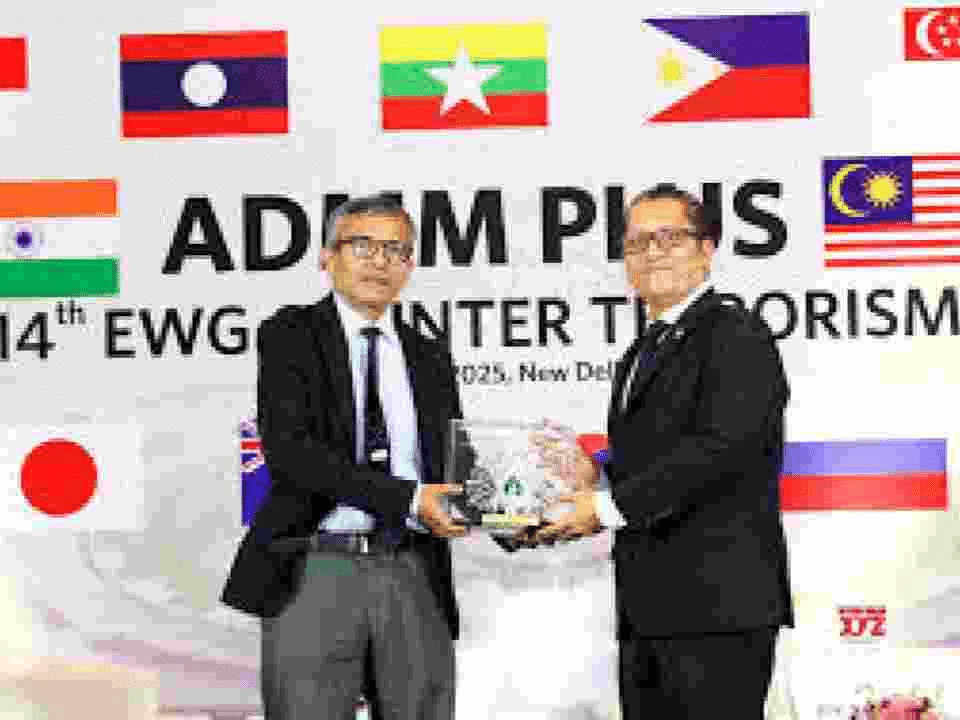 Why in News?
Why in News?
- The 14th ASEAN Defence Ministers’ Meeting-Plus (ADMM-Plus) Experts Working Group (EWG) on Counter-Terrorism is scheduled to occur in New Delhi on March 19-20, 2025. This meeting will be co-chaired by India and Malaysia, marking the first time India has taken on this role in the EWG focused on counter-terrorism efforts.
Key Takeaways
- The ADMM-Plus EWG on Counter-Terrorism is essential for enhancing security collaboration in the Asia-Pacific region.
- It aims to address pressing security challenges through dialogue and cooperation among member states.
Additional Details
- Background of ADMM-Plus: Established in 2010, ADMM-Plus serves as a security platform that includes ASEAN members and eight dialogue partners, focusing on maintaining stability and peace through collective engagement.
- Focus Areas: The meeting will cover various topics, including counter-terrorism strategies, maritime security, peacekeeping operations, humanitarian mine action, and cyber security.
- Participants: The EWG comprises 10 ASEAN members and 8 dialogue partners, which include Australia, New Zealand, South Korea, Japan, China, the USA, and Russia.
The conclave's main objective is to strengthen counter-terrorism strategies among member nations, fostering a collaborative framework for addressing the evolving security challenges in the region. The discussions will also establish a strategic plan for activities between 2024 and 2027.
India’s Heat Action Plans

Why in News?
- As India prepares for another scorching summer, the National Disaster Management Authority (NDMA) is set to roll out an additional 300 Heat Action Plans (HAPs) across various cities. These plans aim to address the escalating temperatures, which have already seen heatwaves beginning earlier this year, with reports of temperatures surpassing 40°C in multiple states. The India Meteorological Department (IMD) anticipates a further rise in temperatures, particularly in Northwest India.
Key Takeaways
- NDMA plans to implement 300 new Heat Action Plans.
- Current temperature trends show heatwaves starting earlier in the year.
- IMD forecasts a continued rise in temperatures across the country.
Additional Details
- Heat Action Plans (HAPs): These are strategic frameworks established by governments to reduce the effects of extreme heat events. They consist of standard operating procedures for cities and states to effectively prepare for, respond to, and recover from heat-related challenges. Key elements include emergency response operations, long-term preparedness strategies, and cooling interventions.
- As of now, around 200 HAPs have been finalized in India, with an aim to reach 500. Many states are still only at basic advisory levels for heat prevention, and the NDMA is focused on ensuring these plans are actionable and not just theoretical.
- Extreme heat presents significant risks to public health and infrastructure, although improvements in weather forecasting have led to a decline in heatwave-related fatalities. Nevertheless, the economic ramifications of heat stress are considerable, especially since 85% of India’s workforce operates in the informal sector, with industries like agriculture and construction being particularly susceptible to heat-related adversities.
- On a global scale, more than 70% of the workforce faces risks from extreme heat, which results in millions of injuries and fatalities each year. Climate change could potentially cost India about 2.8% of its GDP by 2050, impacting the living standards of approximately half of its population. By 2030, job losses due to heat stress could reach around 34 million.
- The Government of India has allocated $30 billion for disaster management from 2021 to 2026, with $6 billion specifically designated for mitigation efforts, including heat management and earthquake mitigation plans. Such financial investments are crucial for bolstering resilience against climate-related challenges.
In summary, the implementation of Heat Action Plans is a critical step for India as it addresses the growing threat of extreme heat. By enhancing preparedness and response strategies, the NDMA aims to protect public health and mitigate economic losses associated with heat stress.
Five Eyes Intelligence Alliance
 Why in News?
Why in News?
- The Five Eyes Intelligence Alliance, comprising the United States, United Kingdom, Canada, Australia, and New Zealand, is encountering significant challenges in the current geopolitical landscape. Established during World War II, this alliance has seen its foundational principles tested, particularly following recent shifts in US foreign policy under Donald Trump's administration, leading to uncertainties about future intelligence sharing and collaboration among member nations.
Key Takeaways
- The alliance originated from wartime cooperation in 1946 between the US and UK.
- It expanded to include Canada in 1948, and Australia and New Zealand in 1956.
- Its focus has evolved from Signals Intelligence during the Cold War to counterterrorism and cybersecurity post-9/11, and now to addressing concerns over China's influence.
Additional Details
- Formation and Evolution: The Five Eyes began as a bilateral intelligence-sharing agreement between the US and UK, which later included Canada, Australia, and New Zealand. The alliance has played crucial roles in monitoring enemy communications and responding to geopolitical threats.
- Recent Developments: The alliance has become increasingly vigilant against global threats, notably warning about risks associated with companies like Huawei in 2018, highlighting potential security compromises in 5G networks.
- Internal Tensions: Recent US foreign policy under Trump has strained relationships within the alliance, raising concerns over aggressive trade policies and provocative statements, which have led to uncertainties regarding the alliance's future stability.
- Impact of US Leadership Changes: The appointment of Tulsi Gabbard as Director of National Intelligence has raised alarms among allies about possible erratic intelligence-sharing practices, reflecting broader fears concerning US nationalism undermining collective security.
The future of the Five Eyes Intelligence Alliance is contingent upon addressing internal conflicts while adapting to the evolving geopolitical landscape. Continued cooperation on intelligence sharing and military collaboration will be essential for the alliance's longevity and effectiveness in ensuring collective security.
30th Session of the International Seabed Authority
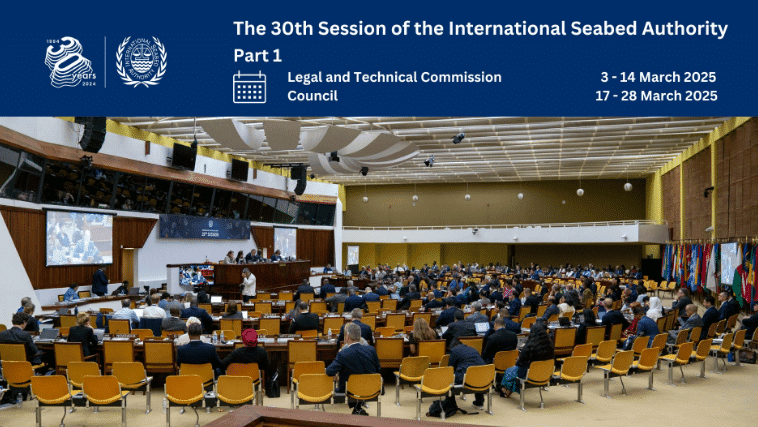
Why in News?
- The 30th Session of the International Seabed Authority (ISA) began on March 17, 2025, in Jamaica, gathering nearly 170 member states along with the European Union. This session is critical as it addresses the regulatory framework for deep-sea mining, amidst rising pressures from industries eager to access seabed resources.
Key Takeaways
- The ISA is responsible for developing a mining code and safeguarding the marine environment.
- Deep-sea mining involves extracting minerals from the ocean floor at depths exceeding 200 meters.
- Current negotiations face significant challenges, including unresolved concerns over environmental impacts and regulatory compliance.
Additional Details
- International Seabed Authority (ISA): Established in 1994, the ISA manages mining and related activities on the international seabed, which is beyond national jurisdictions. It aims to ensure that these activities benefit all of humanity while protecting marine environments.
- Deep-Sea Mining: This process targets minerals such as copper, nickel, cobalt, and rare earth elements, raising serious environmental concerns due to its potential impact on marine ecosystems.
- The Two-Year Rule: Triggered by Nauru Ocean Resources Inc. in 2021, this rule requires the ISA to adopt regulations within two years following a notification to apply for a mining contract, highlighting the urgency for sustainable practices in resource extraction.
- Legal implications exist regarding potential lawsuits against the ISA if mining applications are denied, raising questions about the applicability of investment law principles in this context.
- As of January 2025, the ISA has issued 30 exploration contracts since 2001, with countries like India and various European nations actively involved in deep-sea mining initiatives.
The ongoing discussions at the ISA underscore the pressing need to establish a robust framework for deep-sea mining that balances resource extraction with environmental conservation, ensuring a sustainable approach for future generations.
Euro and Dollar Exchange Rate - March 19, 2025
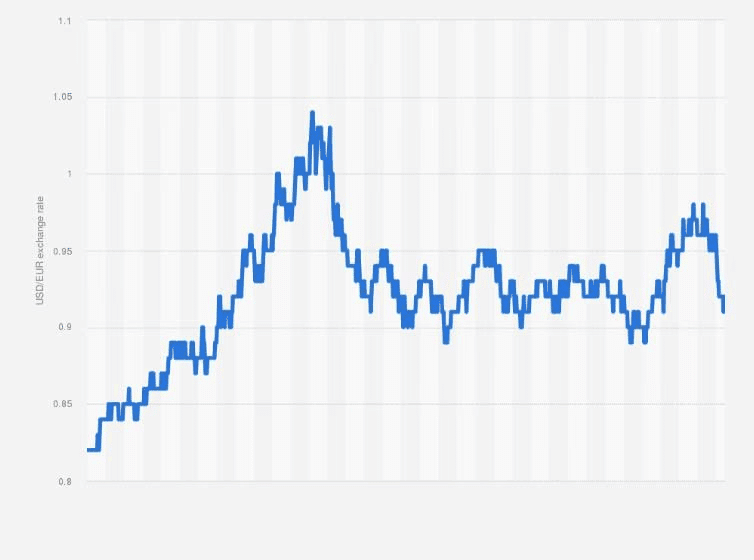 Why in News?
Why in News?
- The exchange rate between the euro and the US dollar is a critical economic indicator that reflects the economic relationship between the European Union and the United States. On November 5, 2024, the euro was valued at 1.0933 US dollars. However, due to various economic and political events, this rate fluctuated significantly, impacting global trade and investment.
Key Takeaways
- Euro's value dropped to 1.0277 dollars by January 20, 2025, after the election of Donald Trump.
- By March 17, 2025, the euro regained value, reaching 1.0919 dollars.
- Currency values are sensitive to economic and political changes.
Additional Details
- Currency Exchange Rates: These rates represent the relative value of one currency against another, influenced by factors such as trade balances, interest rates, and overall economic stability.
- US Economic Policies: Trump’s presidency initially boosted confidence in the US economy through promises of tax cuts and deregulation. However, the introduction of tariffs created uncertainty, negatively affecting economic growth.
- European Economic Recovery: Following a prolonged period of stagnation, the European Union is experiencing a modest recovery, which has strengthened the euro's position against the dollar.
- Investor Behavior: As US economic prospects worsened, investors began favoring European markets, leading to capital inflow into Europe and further bolstering the euro's value.
- Implications for India: The fluctuating exchange rates between the euro and dollar also impact the Indian rupee. A weakening dollar strengthens the rupee, aiding in inflation control, while a stronger euro can enhance Indian exports to Europe.
In summary, the euro and dollar exchange rate is influenced by a mix of economic policies, investor behavior, and geopolitical events. Understanding these dynamics is essential for businesses and investors operating in the global market.
The Future of Free Speech: Global Trends and India's Position
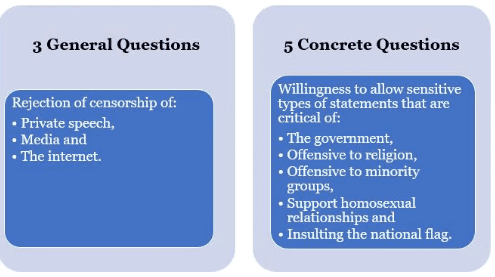
Why in News?
- The Future of Free Speech survey, conducted in October 2024 by an independent think tank, highlights crucial insights into global attitudes towards free speech. India ranks 24th among 33 countries, raising concerns about the protection of controversial speech.
Key Takeaways
- India scored 62.6 in the survey, positioned between South Africa and Lebanon.
- 37% of Indian respondents believe that the government should limit criticism of its policies, the highest among surveyed nations.
- Despite strong support for free speech, actual protections are lacking in India.
- Democratic backsliding is observed in several nations, including India, Hungary, and Venezuela.
Additional Details
- Public Support for Free Speech: The 2024 survey indicates a decline in global support for free speech since 2021. Democratic nations like the United States and Japan have reported drops, while Scandinavian countries, particularly Norway and Denmark, lead the rankings.
- The survey reveals a disconnect in India where a significant number of individuals express support for free speech, yet there is a notable absence of commitment to protecting controversial speech.
- Indians believe their ability to speak freely has improved over the past year, despite observers suggesting that the reality has deteriorated. This highlights a gap between public perception and the actual state of free speech.
- Cultural factors play a crucial role; free speech requires an environment of open debate and tolerance for dissent, which is currently eroding in India.
- Support for free speech tends to wane when it comes to offensive content or religious criticism, indicating a complex public opinion landscape.
This survey underscores the need for a deeper understanding and commitment to free speech, especially in a diverse democracy like India, where the cultural landscape affects the willingness to defend controversial expressions.
Incentive Scheme for Low-Value BHIM-UPI Transactions
 Why in News?
Why in News?
- The Government of India has launched a new initiative aimed at boosting low-value transactions through the BHIM-UPI platform for the financial year 2024-25. This scheme is designed to support small merchants and enhance the adoption of digital payments. It is set to commence on April 1, 2024, and will continue until March 31, 2025, with a significant budget allocation of ₹1,500 crore.
Key Takeaways
- The scheme targets Person to Merchant (P2M) transactions capped at ₹2,000.
- Small merchants will receive zero Merchant Discount Rate (MDR) and a 0.15% incentive per transaction.
- Large merchants are excluded from receiving any incentives under this scheme.
Additional Details
- Incentive Structure: Small merchants will earn a 0.15% incentive for transactions up to ₹2,000, with no incentives for larger transactions. The scheme will provide 80% of the claimed amounts to acquiring banks unconditionally, while the remaining 20% is contingent upon meeting specific performance criteria.
- Performance Criteria: To qualify for the remaining 20% of incentives, banks must maintain a technical decline rate of under 0.75% and ensure a system uptime exceeding 99.5%. This requirement is intended to enhance the reliability and availability of payment services.
- Benefits of the Scheme: This initiative is expected to expedite cash flow for small merchants and improve their access to credit. Customers will benefit from seamless payment options without incurring additional charges, aligning with the government's vision of fostering a less-cash economy through increased digital transactions.
- Goals and Objectives: The primary aim is to promote the indigenous BHIM-UPI platform, with a target transaction volume of ₹20,000 crore during FY 2024-25. Moreover, the scheme seeks to enhance UPI penetration in rural areas by introducing innovative payment solutions.
- Historical Context: Promoting digital payments is a critical component of India’s financial inclusion strategy. Previous initiatives, such as the elimination of MDR for RuPay Debit Cards and BHIM-UPI transactions, have set the groundwork for this incentive scheme, reinforcing the payment ecosystem's growth.
This incentive scheme is a strategic move by the Government of India to encourage digital payment adoption among small merchants, thereby contributing to the broader goal of a more digitally inclusive economy.
Samarth Incubation Program for Startups
 Why in News?
Why in News?
- The Centre for Development of Telematics (C-DoT) has initiated the Samarth Incubation Program to bolster support for emerging startups in India's telecommunications and IT sectors. This program emphasizes innovation and technological progress and is being implemented in collaboration with the Software Technology Parks of India (STPI).
Key Takeaways
- The program encourages sustainable and scalable business models for startups.
- Focus areas include Telecom Software Applications, Cyber Security, 5G/6G Technologies, Artificial Intelligence (AI), Internet of Things (IoT), and Quantum Technologies.
Additional Details
- Support for Startups: Selected startups will receive extensive support, including grants of up to 5 lakh INR, office space at the C-DOT campus for six months, access to C-DOT lab facilities, and mentorship from industry experts.
- Program Structure: Conducted in a hybrid format, each cohort will include a maximum of 18 startups and will last for six months. A total of 36 startups will be able to participate across two cohorts.
- Networking and Collaboration: The program promotes connections between startups, investors, and industry leaders, fostering collaboration and a supportive environment to strengthen the startup community.
- Future Opportunities: Based on their progress, startups may explore further collaboration under the C-DOT Collaborative Research Program, enhancing long-term partnerships and innovation in the tech ecosystem.
This initiative aims to create a thriving startup environment that not only promotes technological advancements but also contributes to job creation in the future.
West Bengal OBC List Controversy
Why in News?
- The West Bengal government is currently navigating a complex legal and administrative landscape regarding the Other Backward Classes (OBC) list. This situation has arisen following a directive from the Supreme Court to update the OBC list, amidst accusations of political bias particularly concerning the inclusion of Muslim communities.
Key Takeaways
- The West Bengal government added 77 communities to its OBC list in 2010, with 75 of those being Muslim communities.
- The Calcutta High Court ruled the list illegal in May 2024, citing that religious criteria were improperly used.
- The Supreme Court has mandated a new survey to reassess the OBC list, emphasizing that reservation benefits cannot be based solely on religion.
Additional Details
- Background of the Controversy: In 2010, the West Bengal government expanded the OBC list significantly, leading to legal challenges that culminated in the High Court's ruling that deemed the list illegal.
- Supreme Court's Role: The Supreme Court's involvement includes a directive for a fresh survey, allowing the state three months to complete this task, to ensure a fair reassessment of OBC status.
- The process for adding communities to the OBC list involves applications, field surveys, and hearings conducted by the West Bengal Commission for Backward Classes.
- Critics have raised concerns about the rapid inclusion of certain Muslim communities, suggesting that this undermines the credibility of the OBC classification.
The impending results of the fresh survey will be crucial in determining which communities remain classified as OBCs, potentially reshaping the political dynamics in West Bengal as the government seeks to balance caste, religion, and political considerations.
|
164 videos|798 docs|1153 tests
|





















